First, let me tell you about my love for Vincent Van Gogh. He is one of the few painters I truly admire. Not only was he ahead of his time, he was also a gifted and prolific (letter) writer. That he was a pained and broken man, yet rendered the most vibrant of colors, makes me love him even more.
I own four Van Goghs– all reproductions, of course. I brought them home from Vietnam ten years ago. While one is a copy of the bright and hopeful ‘Sunflowers’, three are self-portraits painted at different points in his life. Each time I look at these images, I see the slow demise of Van Gogh’s spirit and the evolution of his unique style.
Looking at these reproductions would also make me wonder if I will ever see the original paintings. While ‘Sunflowers’ is on permanent exhibition at London’s National Art Gallery, the portraits are scattered around Europe (one in The Netherlands, one in France, and the last one in London). Just thinking about when or how in the world I’d be able to see these paintings would always make my head spin!
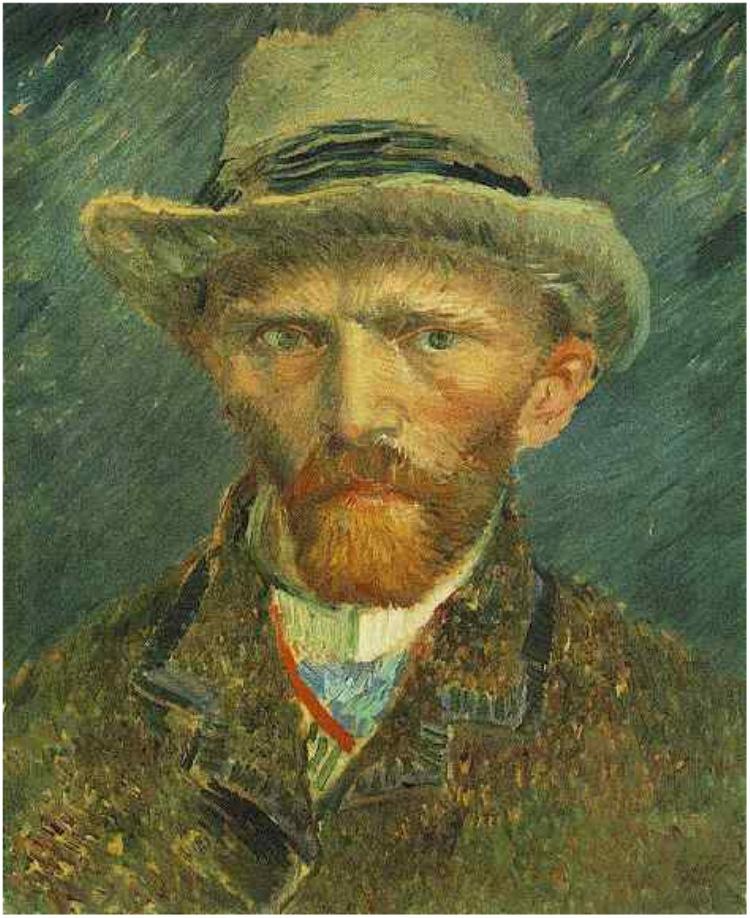
Fast forward to my last full day in Tokyo, 2010. I was in Japan to compete at the Japan Prize. It was the morning after the awarding ceremonies. I was hoping to win and bring home the prize money which was going to be used to produce an environmental show for children back home. But I was not so lucky. So that day, in very low spirits, I decided to spend the day sightseeing. Luckily there was Candice, a Filipina who I met through a friend. She was living with her family in Japan at the time and was kind enough to show me her side of the metropolis–the affluent area of Roppongi.
After a hearty lunch at a Thai restaurant (a welcome break from eating Japanese food for nine straight days) and a visit at the Tokyo Tower, Candice asked me where else I wanted to go. My prompt answer was ‘the museum’. What I really wanted to see was a museum of modern art. But Candice said she knew exactly where to take me.

After a quick cab ride, we found ourselves on the grounds of Tokyo’s National Art Center. Visiting a museum always excites me, especially seeing architectural gems like the National Art Center. And then I saw this…
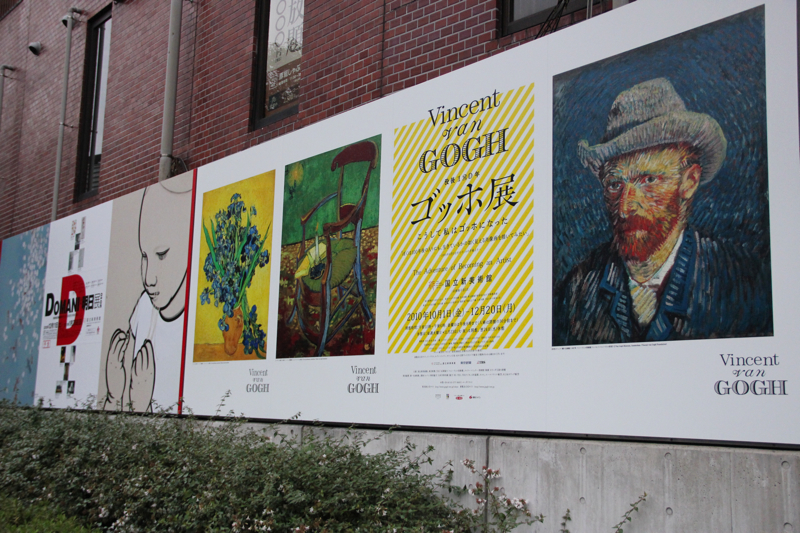
I had to stop myself from jumping up and down. Imagine fulfilling a lifelong dream at the most unexpected place! Apparently, Van Gogh Museum and Kroller-Muller Museum–keepers of some of the finest Van Gogh paintings in the world–have collaborated with the National Art Center to mount an exhibition entitled “Van Gogh: The adventure of becoming an artist.” And lucky me was just at the right place, at the right time.
I went inside the exhibition hall like a child let loose in a candy store. It was such an overwhelming experience that I knew I wasn’t going to remember everything. So I took a few photos of some of my favorite pieces (despite it being forbidden, sorry!).
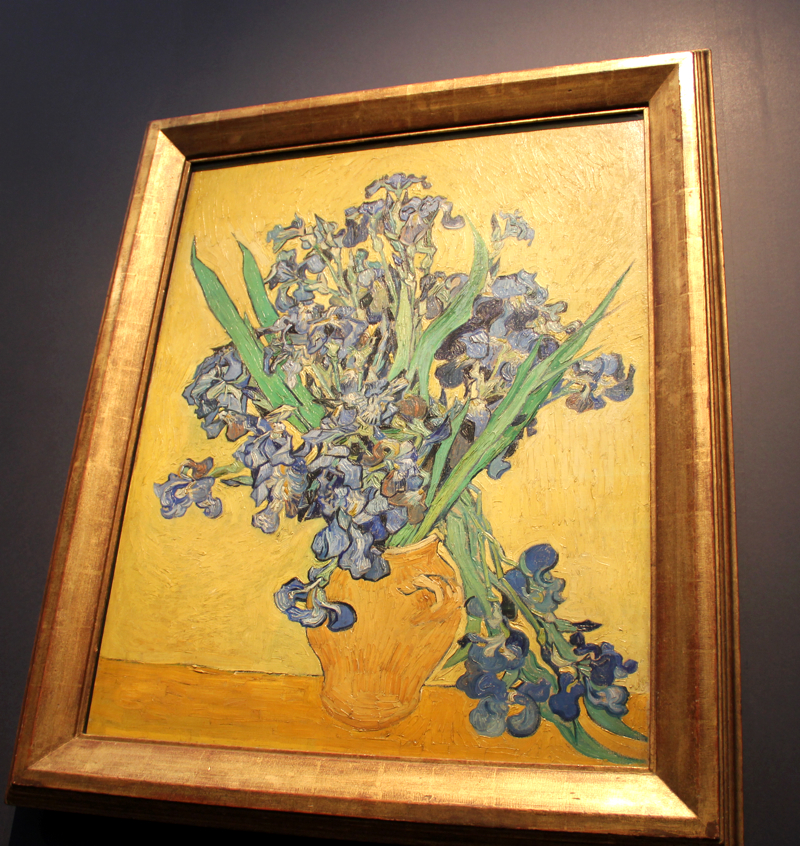
It’s one thing to see the Irises on print, but another to see it up close. The vibrant colors just jump at you, as if they have become living creatures. Van Gogh painted the Irises while confined at the asylum of Saint Paul-de-Mausole in St. Remy in France. He referred to this painting as “the lightning conductor for my illness” because of how it (and painting in general) had helped him battle his mental illness. His most passionate admirer, his brother Theo, described the painting best: “[It] strikes the eye from afar. The Irises are a beautiful study full of air and life.”
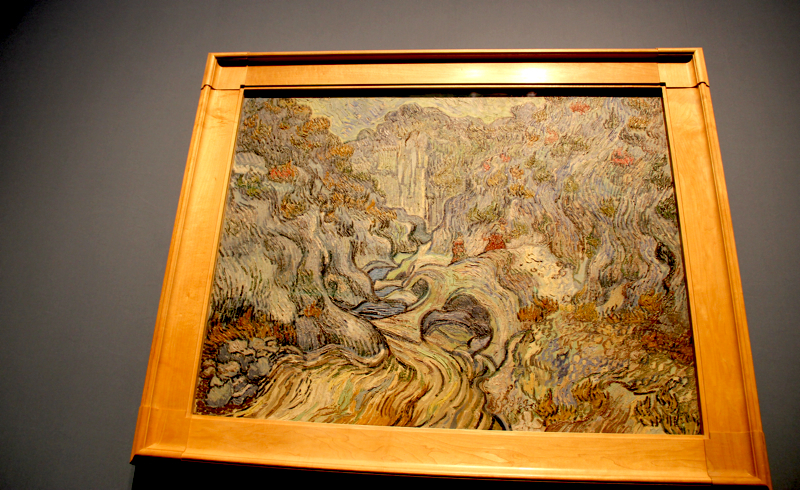
Another outstanding piece on display was The Ravine. Also painted during his confinement in the asylum in St. Remy, the painting bears the now famous brush-strokes, making the vegetation appear as if suspended in eternal movement. Incidentally, a hidden painting was uncovered underneath The Ravine. You can read about it here.
The main attraction of the exhibit was The Bedroom, Van Gogh’s rendition of his bedroom in the Yellow House in Arles.
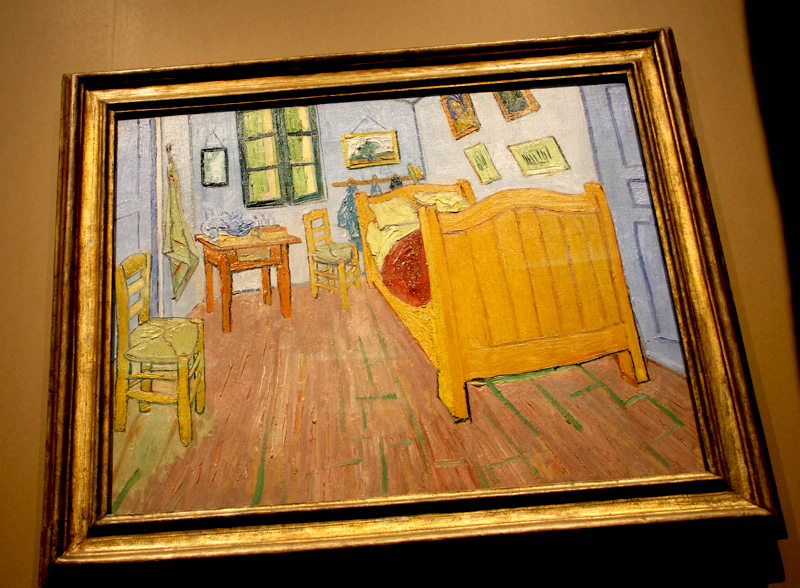
In a letter to his brother Theo, he wrote:
This time it simply reproduces my bedroom; but colour must be abundant in this part, its simplification adding a rank of grandee to the style applied to the objects, getting to suggest a certain rest or dream. Well, I have thought that on watching the composition we stop thinking and imagining. I have painted the walls pale violet. The ground with checked material. The wooden bed and the chairs, yellow like fresh butter; the sheet and the pillows, lemon light green. The bedspread, scarlet coloured. The window, green. The washbasin, orangey; the tank, blue. The doors, lilac. And, that is all. There is not anything else in this room with closed shutters. The square pieces of furniture must express unswerving rest; also the portraits on the wall, the mirror, the bottle, and some costumes. The white colour has not been applied to the picture, so its frame will be white, aimed to get me even with the compulsory rest recommended for me. I have depicted no type of shade or shadow; I have only applied simple plain colours, like those in crêpes.
He also made a simple sketch for his brother to see.
A replica of The Bedroom was installed at the exhibit to give the visitors a feel of the painting’s unusual perspective. Apparently, Van Gogh did not follow the laws of perspective accurately to make it resemble a Japanese print. He wrote to Theo: “…you can see how simple the idea is. The shadows and cast shadows are removed; it’s coloured in flat, plain tints like Japanese prints.”
See the clip I illegally shot below: 🙂
Van Gogh was fascinated with Japanese art and collected hundreds of ukiyo-e prints. His paintings were later heavily influenced by Japanese art, especially during his stay in Arles.
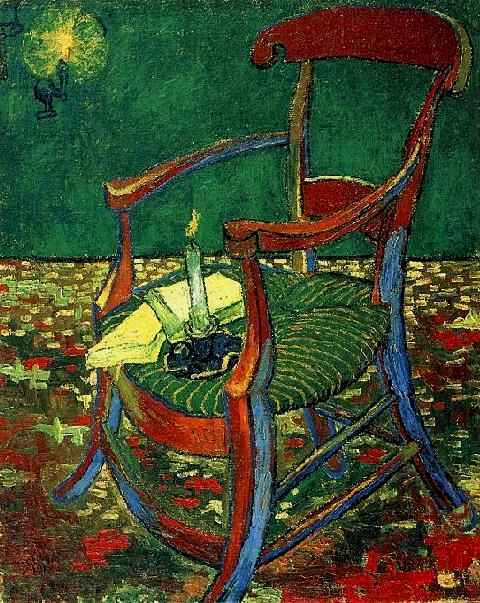
He shared this love for Japanese art with Theo:
About this staying on in the South, even if it is more expensive, consider: we like Japanese painting, we have felt its influence, all the Impressionists have that in common; then why not go to Japan, that is to say to the equivalent of Japan, the South?
In a way, this exhibition was a sort of homecoming for Van Gogh. In his lifetime, he was never able to set foot in Japan. But on this day, his paintings were finally home.
As I went around the exhibition hall to look at more Van Goghs, I felt immense gratefulness wash over me. These are the moments that I live for when I travel… moments that are unexpected, surprising, and beautiful. The feeling of defeat I felt just the night before was replaced with an overwhelming feeling of gratitude. I’d like to think that even if I am such a small person, everyone (Candice, Japan Prize, God?) had conspired to make me feel special. Was I undeserving of such generosity? I don’t think so. No one else could have felt as joyful as I. Or as thankful.
The Tokyo National Art Center:
- 7-22-2 Roppongi, Minato-ku, Tokyo, 106-8558, Japan
- 10:00 − 18:00 (Friday 10:00 − 20:00) Last admission 30 minutes before closing
- To get there:
- Tokyo Metro Chiyoda Line Nogizaka Station Exit 6 is directly connected to the Center
Tokyo Metro Hibiya Line Roppongi Station 5-minute walk from Exit 4a
Toei Oedo Subway Line Roppongi Station 4-minute walk from Exit 7 - website: http://www.nact.jp/english/index.html


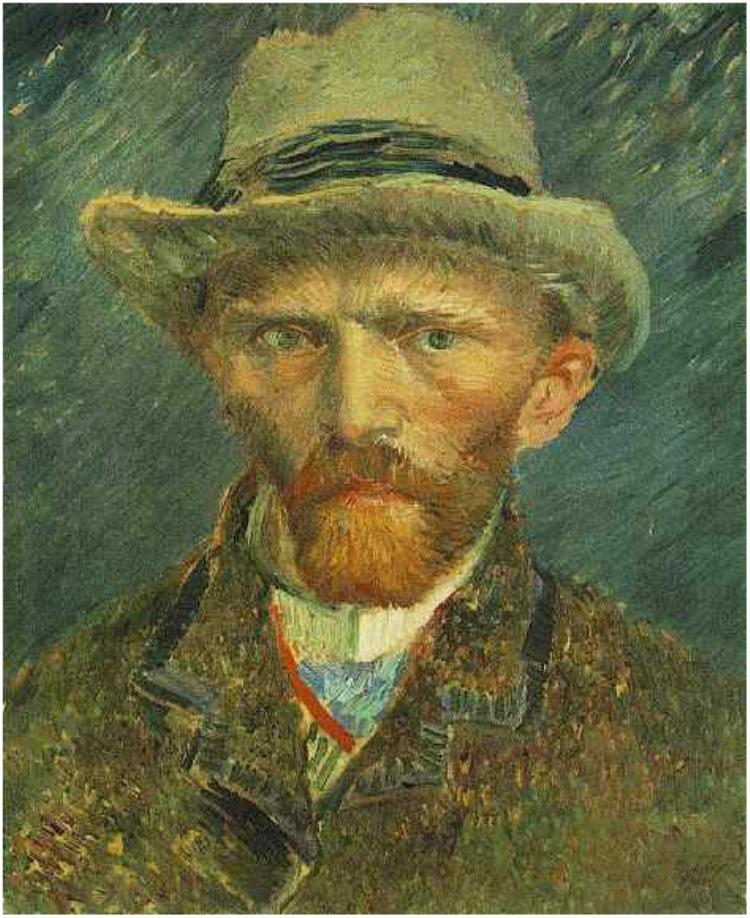

You’re my new favorite writer and one of the few bloggers whose post I read from start to finish. :).
Being a foodie, your egg tart post initially caught my eye then I went to your other posts and found myself enjoying just the same.
Ako naman, though not well-informed with art, I am appreciative of Amorsolo’s work because of most of it are about rural landscapes which I like. 🙂 Keep on writing!
Awww… This made my day, Christine. Thanks so much! My readers’ feedback means so much to me. Please do follow me on Facebook and/or Twitter.
I can understand why you like Amorsolo’s work since you’re a hiker and a mountaineer.:) Are you affiliated with UPM? I have some friends who are members.:)
Again, thanks so much! Safe travels!
Pauline